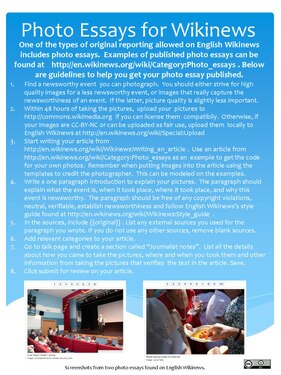Training/Materials: Difference between revisions
(Transclude) |
No edit summary |
||
| Line 1: | Line 1: | ||
{{Header blue| | {{Header blue|Handouts|margin-bottom: 0;}} | ||
There are different ways of understanding people's learning styles. One model groups people who learn by visual cues (diagrams and charts), listening (talks, conversations, even one-to-one emails), reading/writing (essays, manuals), and demonstrations (using concrete examples). It is important to address these different styles, and the handouts below are useful for people who learn by reading and through demonstration as they provide detail on different aspects of editing. | |||
{{:Training handouts}} | {{:Training handouts}} | ||
Revision as of 12:40, 21 July 2017
Handouts
There are different ways of understanding people's learning styles. One model groups people who learn by visual cues (diagrams and charts), listening (talks, conversations, even one-to-one emails), reading/writing (essays, manuals), and demonstrations (using concrete examples). It is important to address these different styles, and the handouts below are useful for people who learn by reading and through demonstration as they provide detail on different aspects of editing.
Handouts
There are different ways of understanding people's learning styles. One model groups people who learn by visual cues (diagrams and charts), listening (talks, conversations, even one-to-one emails), reading/writing (essays, manuals), and demonstrations (using concrete examples). It is important to address these different styles, and the handouts below are useful for people who learn by reading and through demonstration as they provide detail on different aspects of editing.


